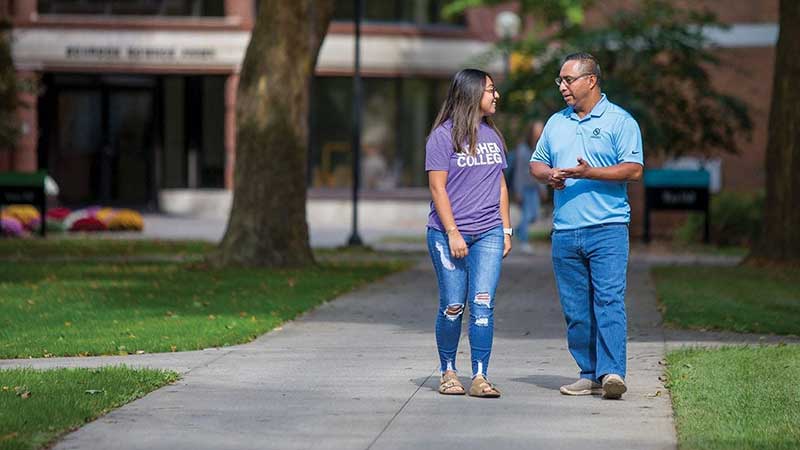
Economic recovery depends on the ability of regions to work collaboratively – that is the consensus of state and regional leaders who know we can’t return to pre-pandemic employment rates simply by incentivizing job creation. They know that the strength of the workforce is directly tied to a region’s housing, healthcare, education, and, increasingly, broadband. In other words, it’s not one thing, it’s a systems thing.
Knowing that complex social challenges – like restoring economies – cannot be solved by a single sector, more and more communities are creating or reenergizing partnerships that bring together the private, public, and social sectors around common goals. Over the past few years, Lumina Foundation, the Kresge Foundation, and CivicLab have recognized the best of these cross-sector partnerships and designated them Talent Hubs. As we’ve worked with these communities, we’ve taken note of what makes them exemplary.
Now some of the lessons from these 26 Talent Hubs have been compiled in a 10-step guide to building local talent that we hope will inspire and inform other communities who want to boost their educational attainment and develop their workforces. The guide serves as both a path for creating new partnerships and a checklist for improving existing ones. Its ideas work in any context, any place, and with any type of partnership.
Too often, leaders looking to create partnerships adopt models and structures that have worked elsewhere without adapting them to their own stakeholders’ goals. We have learned time and again that no one model works. But they all start with the same question: What can we do together that we can’t do alone?
To answer that question, communities should go to Step 1: Create a cross-sector partnership committed to changing systems. Through the stakeholder engagement process leaders determine “who is responsible for the system you seek to change.” We cannot overstate the importance of this first step: The only way to change the system is to get the system in the room.
In 2018, I worked with a group that sought to increase economic opportunities in five distinct regions. The partnership had lost steam in recent years; after an initial burst of energy, it was now harder to get stakeholders to come to meetings let alone to take action. After a partnership health assessment, the problem became clear: Those responsible for the system were not at the table.
The partnership had included top executives from major employers, school superintendents, college presidents, and heads of major non-profits, but it lacked anyone at the director level or below. The partners also failed to include community organizations respected by the populations they served. In short, because the partnership was too limited, it was unable to generate trust and interest in the work.
Stalled-out partnerships are not a new problem. Fortunately, those now looking to refresh them can learn much from the later steps in the guide.
For example, Step 7 – “test your ideas; fail fast to learn fast” – can be uncomfortable for established partnerships. Over time, partnerships can become risk-adverse as they seek to protect the political, social, and financial capital they have gained with success. But reduced risk tolerance is an early sign of partnership decay. And, in times of great need, such as the current moment, it is essential to learn quickly when addressing complex social challenges.
Partnerships experiencing stagnation might first re-frame how they refer to the work they are incubating. Many Talent Hubs have shifted away from “pilots” and instead embraced “prototypes” – a term that signals both iteration and sustainability.
For instance, Shasta County, Calif., and Las Vegas, Nev., who have been working to align talent development with industry demand, prototyped projects to restructure college and work schedules to better serve adult learners. Based on some initial setbacks, modifications were made after a single semester, creating a rapid iteration cycle that improved the program with an eye on sustainability. Once the prototype had been fully tested, the partnerships shifted resources to scaling the program to more campuses and employers.
The lesson here is twofold: 1.) Because program improvements were made rapidly, the partnership was able to serve today’s students while improving the system for tomorrow’s. 2.) Framing the program as a prototype prepared partners for eventual scale. In other words, scale and sustainability were part of the design from the start, leading to eventual success.
Whether a community is launching a new partnership or breathing life into an existing one, these 10 steps serve as important guideposts on the path to excellence. Rather than replicating other models wholesale, following this process helps leaders transform their communities by leveraging their unique characteristics and strengths.
